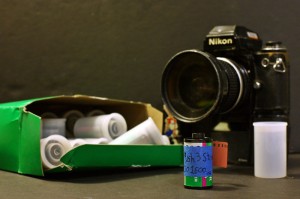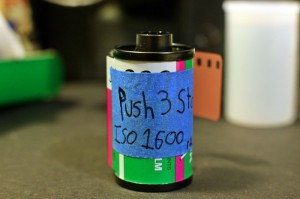Flying With Film 101 : The Do’s and Don’ts
Web: www.stevenfrischling.com — E-Mail: fish@flyingwithfish.com
8/06/2009 – Flying With Film 101 : The Do’s and Don’ts
Surprisingly the number of photographers flying with film is on the rise. With this resurgence of photographers tossing film into their bags and hitting the road there is one clear and obvious concern regarding the safety of their images.
What is the primary concern of photographers packing film for the road? How to avoid having their film damaged by X-Rays. The answer to this question is surprisingly simple and fully effective at the vast majority of airports travellers are likely to transit around the world.
While most airports have their x-ray scanners calibrated, and x-rays are unlikely to harm most film, there are instances of low ISO films being fogged by x-ray scanners…so why take the risk? At airports around the world there are often signs up clearly stating that only “High Speed” film will be suffer the effects of x-rays. Some airport signs go so far as to list ISO 800 or ISO 1600 as those films likely to encounter problems if x-rayed.
Rather than stand in line at the airport and argue with security that you’d like your Fujichrome Provia 100F, Ilford HP-5+ or Kodak Portra 400NC hand checked, simply label the film as “Pushed” and write a new ISO on the film can with a piece of tape.
Years ago when I flew with film far more often than I do today I use to place masking tape on my all my film canisters rating them between ISO1600 and ISO3200.
If I shot Ilford HP 5+ at ISO 400, I’d write on the film canister “Push 2 Stops 1600” , if I happen to actually push the film on each canister I’d made a denotation to myself at the end of text. Next to “1600” I’d write “r1” or “r2.” R1 equaled a 1-stop push and R2 equaled a 2-stop push. This code was simple for me, “R” stood for “Real” as in “I really pushed the film.”
No one at any airport security check point ever questioned the denotations on my film, all they where concerned with was that my film was considered “high speed” and needed to be hand checked.
In the United Kingdom film speeds of ISO 800 and above, as well as certain specialty films, qualify for a ‘special handling request’ (ie: hand-check). While hand-check requests are normally accommodated, they are at discretion of the on-duty security supervisor.
In the United States the Transportation Security Administration (TSA), like their UK counterparts, allows for hand inspection of ISO 800 or higher film, and specialty films. In fact the TSA has this quote on their web page regarding hand inspection of film at TSA check points “Protect your film by requesting a hand-inspection for your film.”
What should you NOT do when travelling with film?
For starters you should never place your in the cargo hold of your flight. Baggage placed in the cargo hold is subject to significant x-rays that can damage film, including films of lower ISO speeds. If you are flying with significant quantities of film consider using a commercial shipper such as FedEx or UPS. When shipping with them you need to have your package clearly labeled as “Light Sensitive Materials.”
While many companies produce and sell ‘film-shield‘ bags, in reality these bags are more likely to cause harm to your film than protect your film. When an airport security x-ray operator is unable they see through an item within a bag they frequently crank up the power of the x-ray. As the x-rays are cranked up they are able to see through the ‘film-shied’ protector bags, as the intensity of the x-rays increase to cut through the ‘film-shield‘ the end result is the film that should be protected in the ‘film-shield‘ gets baked inside. The end result is almost always the film you sough to protect is fogged or completely destroyed.
So while grabbing your Nikon F3hp or Leica M4-P and all the film you can stuff in your Mountainsmith Tour pack, remember that some tape a Sharpie marker can make your airport experience simple and stress free.
For more information on the resurgence of film visit www.insideanalogphoto.com
…below are two photos of how I label my film to avoid the question of “should this film be hand checked?”
(Yes, I still maintain a full Nikon film kit and have more than half-a-dozen pro-packs and bricks of film in my office)
Happy Flying!




I confirm that some operators can push the X-ray level of their machines. At BRU airport I saw my films through a certified ISO 1000 film safe bag on their monitor when I they asked to rescan the bag itself.
After seeing that I always travel with my films in a transparent bag and always requires a hand inspection and never accept they don’t. I also take a copy of the TSA paper “Traveling with film” just in case of.
I never had problem excepted in ZRH last Friday where I had a very strong argument with the chief operator and finally obtain the control I asked after threaten them to go backward through the control area if they insists. (at the first time they wanted open my exposed 120 films, crazy isn’t it ?).
When traveling abroad in countries where I do not speak the native language (e.g. China, Thailand, Japan) I always ask somebody to write my request on a piece paper).
The controls carried out in the underground may also ask to check your photo bag like in Bangkok or Shanghai. These operators seldom speak English.